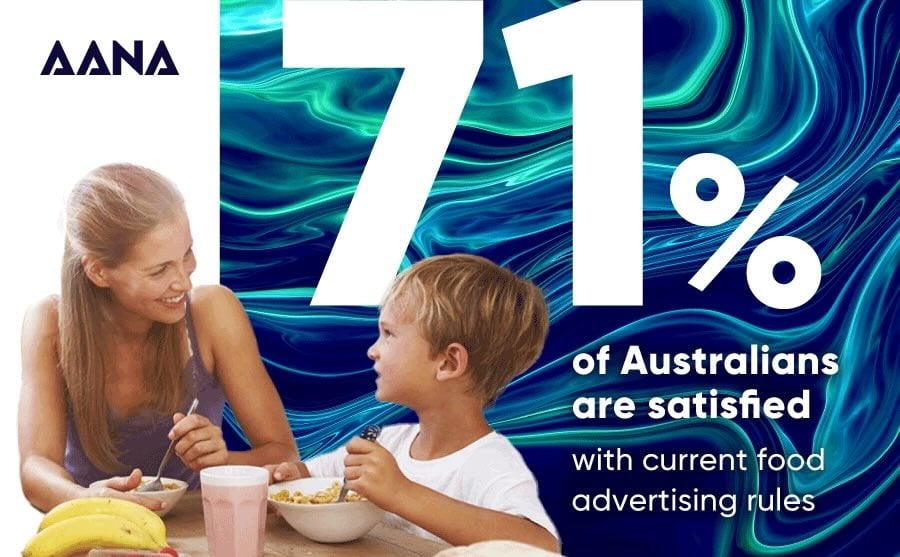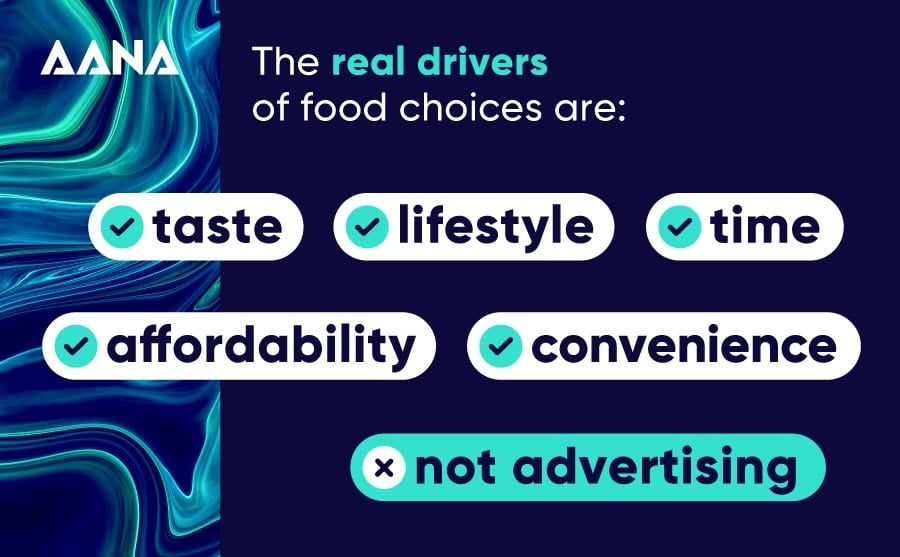Australians are calling for interventions such as education, food subsidies and school programs to tackle obesity effectively instead of tighter advertising restrictions, in new research backed by The Australian Association of National Advertisers (AANA).
“I think what we found is quite remarkable and pretty emphatic about what consumers think.,” Josh Faulks, CEO of AANA, told Mediaweek.
“Consumers really want more health education and support; they’re not looking for more advertising restrictions.”
The research, conducted by Neilsen, looks into why ad bans are ineffective, what drives consumer behaviour toward less healthy food, as well as examines advertising industry actions and government interventions.
This comes as the debate with health advocates and Teal independents over the effectiveness of ad restrictions on less healthy foods versus lifestyle and education initiatives intensifies
In Australia, bans are already in place on government assets in South Australian and the ACT.
Bans are unhealthy food ad bans are also in place Chile, Quebec and the UK, however Faulks said in those markets: “Obesity rates have either stayed the same or worsened over that time.
Faulks said: “The simple fact is that ad bans haven’t worked to reduce obesity. This research explains why that ad bans do not educate or support the community to change their behaviour. They just ban ads.”

AANA research reveals what Australians really think
The survey of more than 2,000 Australians aged 18–65 revealed that 71% of Australians are satisfied with existing regulations, which include limits on marketing to children under 15s and restrictions on outdoor ads near schools.
Stronger government support for health education programs and initiative that promote affordable healthy food were highlighted in the study as more effective.
The report noted the promotion of physical activity (58%), subsidising healthy foods (54%), introducing healthy eating education programs in schools (53%), providing nutritious school meals (52%), and enhancing nutrition labelling (49%) as effective policy interventions.
Outside of government initiatives, the report revealed that more than half (75%) of parents believe they have significant control over what their children eat, while (73%) say their own dietary choices directly affect their children’s long-term health.
According to the report, the biggest drivers of less healthy food consumption are convenience (44%), taste (43%), lifestyle and time constraints (31%), affordability (29%), and quality (26%).
While the top reasons Australians consume occasional foods are as a treat (55%), for taste (49%), or to satisfy cravings (44%).
The findings suggest that empowering parents, improving access to affordable healthy options, and education initiatives could have a bigger impact on long-term health outcomes than further limits on food advertising.
Faulks called that the research a “toolkit to drive real behavioural change around healthier eating habits.”
Alongside Australians’ call for health education and support, he noted that “the industry is ready to work with the government and health experts to drive these kinds of campaigns that we know are effective.
“The food and beverage industry are doing reformulations to reduce the amount of fat and sugar in many of their products.
“What these insights bring out is that Australia’s brands need to come together with the government and health experts to try and drive some healthier eating habits.”
The industry’s “easy first start”
The advertising industry has already made strides in contributing to amplifying such interventions, Faulks highlighted the OMA’s annual healthy eating campaign and the $12.3million donated to promote the message.
“They (the OMA) struggled to get federal and state government involved in those campaigns. This is the industry coming together to promote healthy eating and donating a lot of media to make it happen.”
He called it an “easy first start” for the industry, across different media channels and advertisers, to unite and drive better healthy eating habits and for state and territory governments to jump on board.

Regulations already in place
As a self-regulator, AANA’s food and beverage advertising code is recognised as some of the world’s strictest regulations in regard to food and beverage advertising across all channels at all times of the day.
Faulks said: “The rules effectively ban advertising of unhealthy food to children, and they are already designed to encourage the promotion of healthy eating. That includes prohibiting advertisers from targeting children with unhealthy food and beverages.”
“With Ad Standards, the independent body handling complaints and operating at no cost to government and no cost to the community, you have a very efficient way to make sure that there is compliance with those codes.
“The industry’s view on this at the moment is there are very strong rules when it comes to advertising food and beverage in Australia. It is built into a system that has been there for decades, and it operates at no cost and at no cost to government or the community.
“So, at the moment, we would say that there’s no need for additional regulation when it comes to food and beverage advertising in Australia.”
But will AANA’s research get policymakers on board?
Faulks said the research makes clear what Australians want to see from governments when it comes to the more effective interventions and education programs.
“I think the important thing is for the governments to listen to what the consumers and Australians are saying about what they would like when it comes to the development and improvement of healthier lifestyles.”
‘Now is a great time to come together’
Looking ahead, Faulk reiterated that Australians want health education and support when it comes to healthier lifestyle choices, rather than advertising restrictions.
“It’s in everyone’s interest that we all live healthier lifestyles when it comes to the pressure on the health system and also for basic quality of life.
“Now is a great time for the industry to come together with health experts and the government to help promote a healthier lifestyle.”
Top image: Josh Faulks
